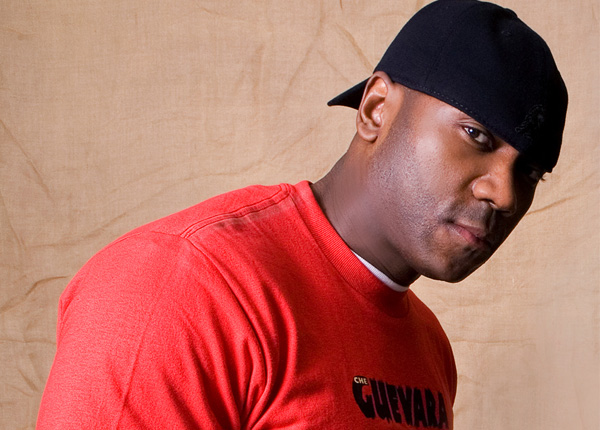Rob Swift: “Rabia – 2nd Movement” (The Architect, Ipecac, 2/23/10)
Rob Swift: “Rabia – 2nd Movement”
Rob Swift’s online radio show: Dope on Plastic

DJ Rob Swift is one of the premier turntablists scratching and mixing today. His most recent album, The Architect, explores a distinctly classical sound — a genre totally foreign to Swift until recently. After his girlfriend turned him onto Frédéric Chopin, Swift immersed himself in the culture of classical music, and he soon found himself bridging the gap between the centuries-old compositions and his modern-day craft. Swift penned this piece for ALARM explaining the intersections of classical and hip hop in his own music.
My Introduction to Classical Music
by Rob Swift
The genre of classical music has helped me reinvent my approach to making turntable music! I know it sounds sort of odd coming from a hip-hop DJ, but it’s true. When you think about it, we all have some sort of connection to classical music, whether it was learning about it in music class as a child or listening to it in movies and commercials. At one point or another, you’ve been touched by classical compositions from the likes of Frédéic Chopin, Ludwig Van Beethoven, or Wolfgang Amadeus Mozart, my personal favorite composers!
Up until June of 2008, I wasn’t ready to take in the genre. I perceived it to be the kind of music that would play in the background of a movie or car commercial. But two years ago, on a summer afternoon in June, my girlfriend introduced me to Chopin’s “Prelude in E Minor, Op. 28, No. 4.” I’ve been a fan of the genre ever since. “Prelude…” was the first classical composition to penetrate my psyche. It’s a composition that evokes a beautiful balance of emotions out of me whenever I hear it. Sadness, strength, and perseverance drive the piece. What’s more, the idea of a piano as the sole instrument being played speaks to Chopin’s ability to get as much out of one instrument as humanly possible.
Chopin influenced me to research other composers like Beethoven. After discovering Chopin, it was important for me to understand how the approaches of other classical composers differed from one another. Whereas “Prelude…” relies on the piano as his voice, “Violin Sonata No.2 in A Op.12 No.2 I. Allegro Vivace Opening,” one of my favorite Beethoven compositions, incorporates piano and violin. Being a novice to classical music, “Violin Sonata…” was an opportunity for me to understand how composers expand their musical reach with the use of other complementing instruments. “Violin Sonata…” reminds me of what we turntablists call question and answer or Q&A.
To achieve Q&A, it takes a minimum of two DJs and a great deal of nonverbal communication. In other words, the sound each DJ chooses to scratch is their voice, and the specific scratch patterns they execute on the turntables are their words. When I first listened to “Violin Sonata…” it felt like I was hearing a conversation between the violin and piano. Likewise, when two DJs Q&A, both are taking part in what a musical purist might consider a “bastard language,” because there are no music sheets being read; nothing’s notated. The cuts and scratches you hear during a Q&A session stem from what Grand Wizard Theodore created in the streets of the Bronx in the mid-1970s.
“Lacrimosa,” by Mozart, is the perfect example of how to combine multiple instruments with vocals and have it all become one. For me, “Lacrimosa” served as a musical reference for what I wanted to accomplish on The Architect. Like “Lacrimosa,” The Architect uses symphonic instrumentation while incorporating vocals to help accentuate different sections of the album. The catch is that the turntable was my instrument of choice. You might ask, “How can a turntable replicate the sound of a violin, piano, or vocal for that matter?” My answer is that this, in fact, is the beauty of the turntable. If you scratch violin strings, the turntable becomes a violin. Scratch piano notes, and it becomes a piano. Scratch a word or sentence, and it become a vocalist.
In the initial days of learning about Chopin, Beethoven, and Mozart, I remember thinking to myself, “What would these composers sound like if scratching existed back in their time?” Thankfully, composing The Architect and my follow-up Sketches of the Architect EP put me on a musical path to answer that question.

